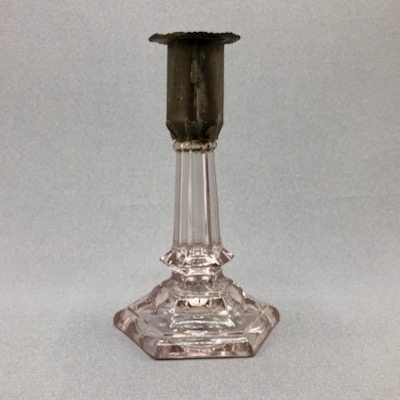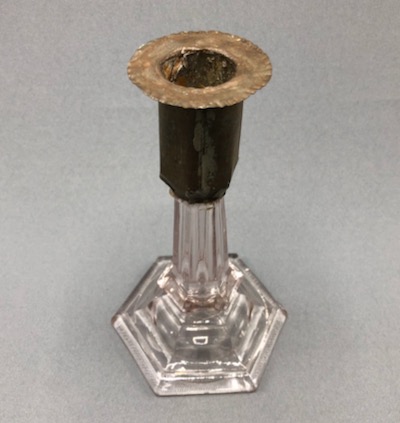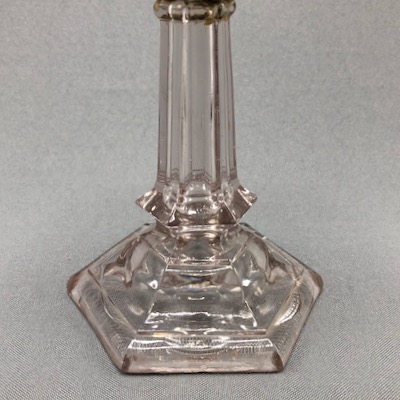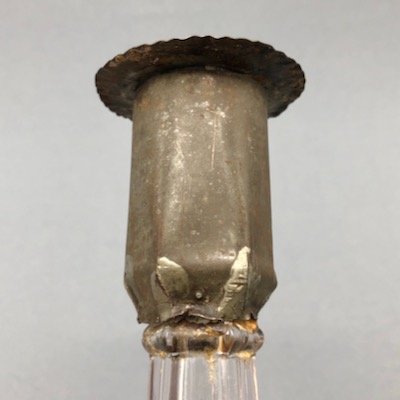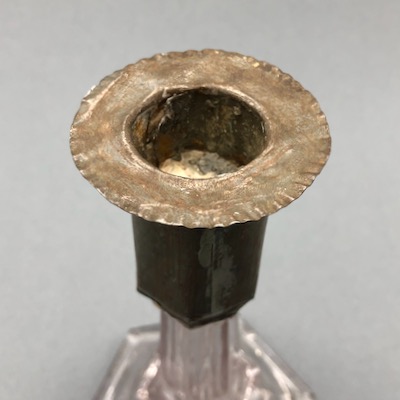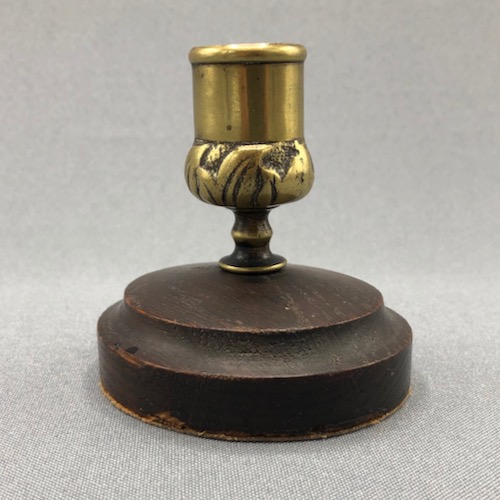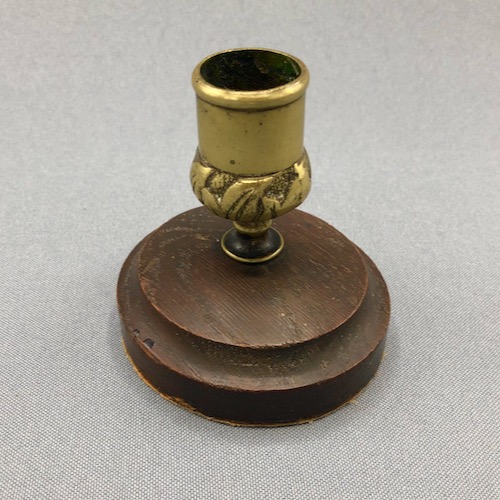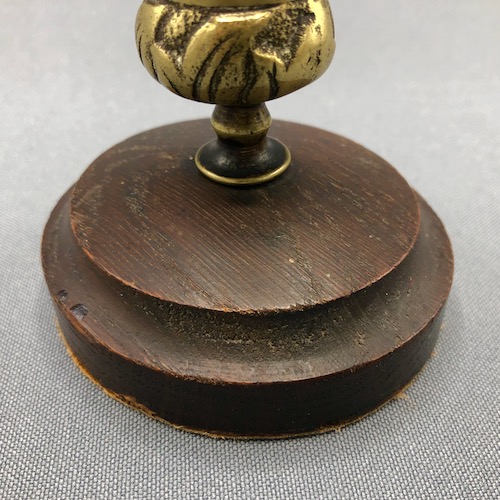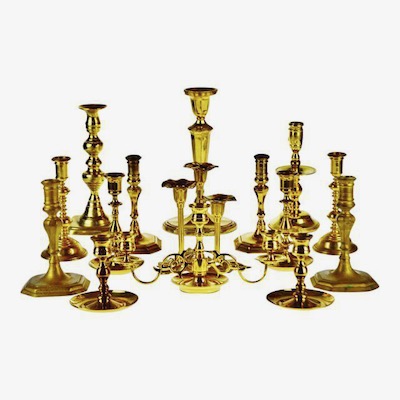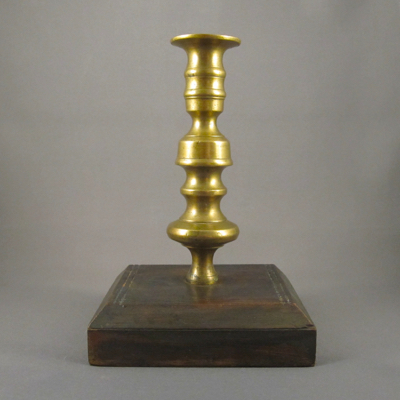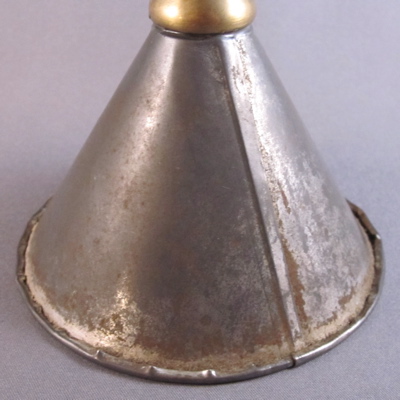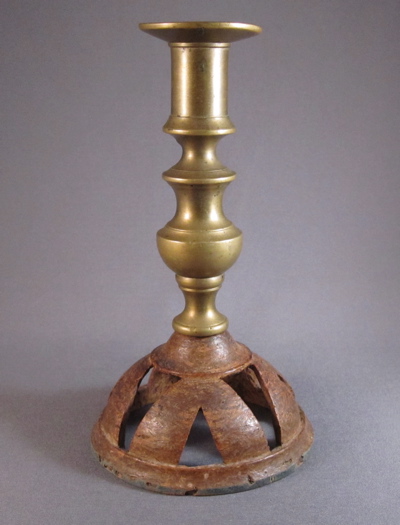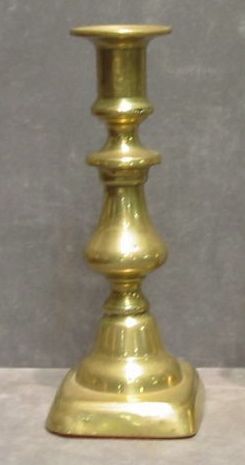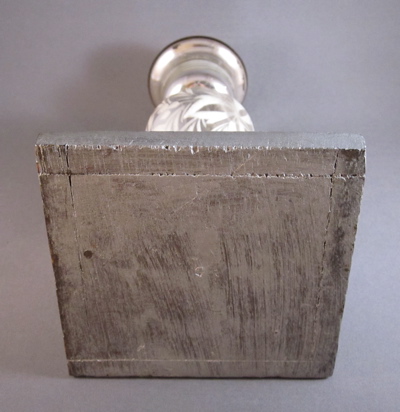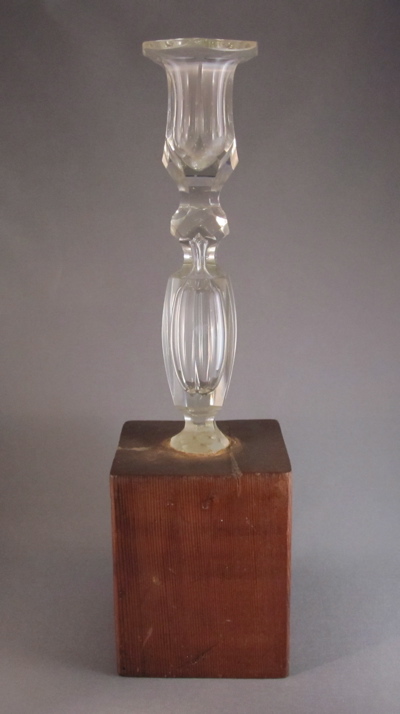This poor pressed clear glass candle holder barely survived whatever mishap it befell over 125 years ago. Only about half of it remains, and thanks to a crafty tinker, it now stands 11 inches high in its make-do replacement base. And what a strange base it is! The 3.5 inch square weighted base, has a post on one end, not centered, and is missing metal pieces at the top. Perhaps this base was actually made for something else, and the broken candle holder was added. If anyone out there can shed any (candle)light onto this subject, please let me know. I’d love to solve this mystery.
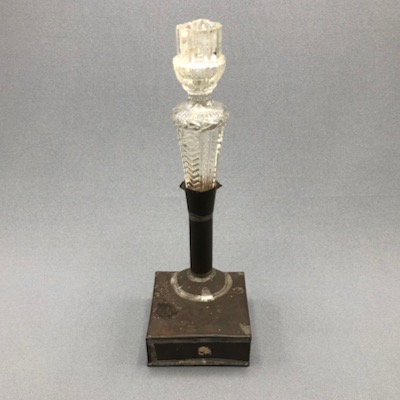

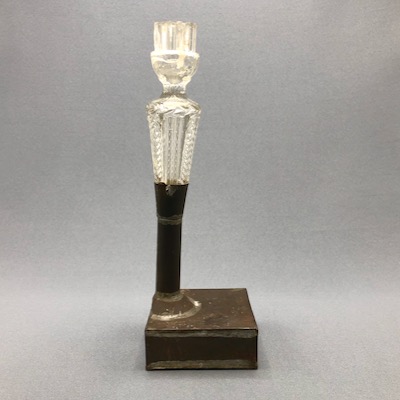
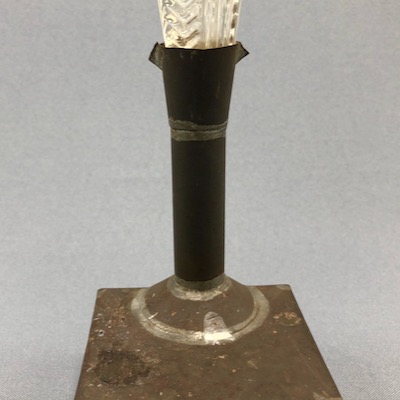
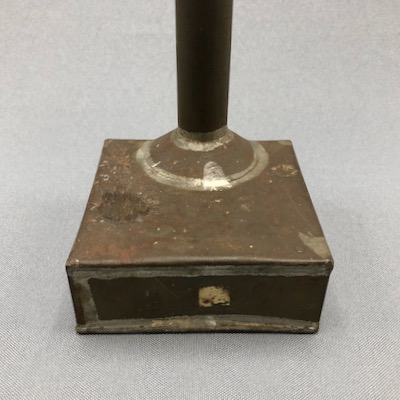
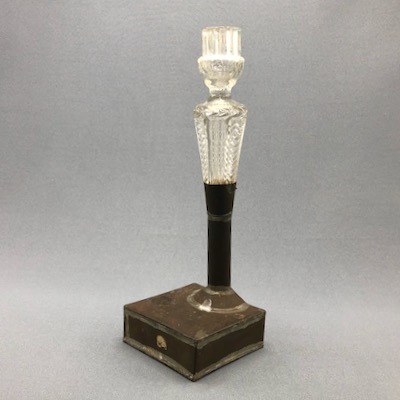
This candle holder with similar form to mine suggests what the original base might have looked like.
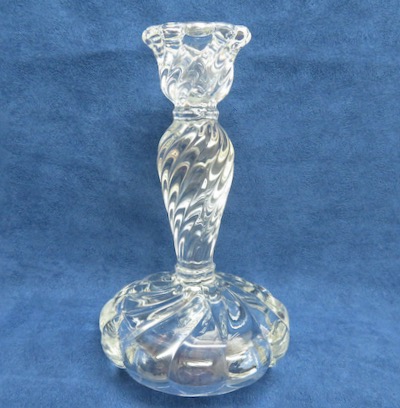
Photo courtesy of eBay
